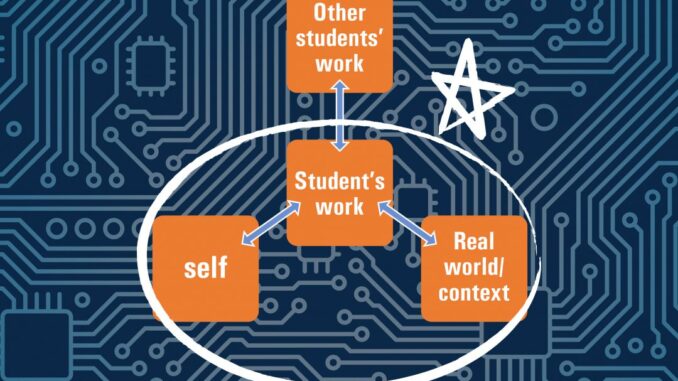
The concept of education has always been shaped by the environment in which it takes place. For centuries, classrooms were defined by physical walls, limited to those who could gather in a single space. Today, that definition has expanded dramatically. Advances in technology and the increasing interconnectedness of societies have given rise to the idea of the global classroom—a space where learners from different countries, cultures, and time zones can come together to share knowledge and perspectives. This transformation is more than just a technological development; it represents a profound shift in how we think about learning, community, and opportunity in a world where borders are becoming less relevant to the exchange of ideas.
The global classroom has emerged through digital platforms that make communication and collaboration seamless. Video conferencing, online learning platforms, and collaborative tools allow students and professionals to interact in real time, regardless of geographical distance. A business student in São Paulo can now participate in a seminar led by a professor in London, working alongside peers from Nairobi, Mumbai, and Toronto. These connections offer far more than access to content; they create opportunities to experience diverse perspectives, challenge assumptions, and learn in ways that mirror the interconnected world in which we live and work. Exposure to global voices expands understanding, making learning not just an academic pursuit but a truly cross-cultural experience.
This evolution of education carries significant implications for business and leadership development. In an era where companies operate in global markets and teams are increasingly international, the ability to collaborate across cultures is a critical skill. The global classroom provides a training ground for this. Learners are required to navigate differences in communication styles, cultural norms, and problem-solving approaches. For instance, a collaborative project between students in Asia and Europe may highlight distinct attitudes toward hierarchy, decision-making, or deadlines. Negotiating these differences in a learning environment builds the cultural intelligence and adaptability that business leaders must demonstrate in global enterprises. The classroom becomes not just a space for acquiring knowledge but a microcosm of the global marketplace.
Beyond cultural awareness, the global classroom also democratizes access to education. Traditionally, geography and financial means determined who had access to world-class learning opportunities. Digital tools have broken down many of these barriers, enabling learners in underserved regions to participate in programs once reserved for those with the privilege of proximity or wealth. While challenges like internet access and technological infrastructure still exist, the potential for inclusivity is unprecedented. A young professional in a remote town can now take part in a leadership workshop run by a top university or join a skills-based course taught by industry experts halfway across the globe. This democratization not only benefits individuals but also enriches the global talent pool, creating opportunities for voices that might otherwise have been excluded.
The global classroom also encourages collaboration in solving shared challenges. Many of the issues facing humanity—climate change, public health, technological ethics—are not confined to national borders. Bringing learners together from diverse backgrounds allows for collective problem-solving that mirrors the global nature of these challenges. Imagine a group of students from different continents working together on a sustainability project. Each brings local knowledge about environmental issues specific to their region, contributing to a more holistic and actionable understanding of the problem. These collaborations prepare learners to tackle global challenges with the collective mindset required to achieve real impact.
Technology plays a pivotal role in shaping this landscape, but it is not just about the tools themselves—it is about how they are used. Simply transferring traditional lectures into online formats does not fully harness the potential of the global classroom. What makes this environment powerful is the emphasis on interaction, engagement, and co-creation. Learners are not passive recipients of information; they are participants in a shared dialogue. Group projects, peer-to-peer feedback, and collaborative research become the vehicles through which knowledge is built and relationships are formed. This approach reflects the evolving nature of work itself, where distributed teams often collaborate virtually to achieve common goals.
Of course, the global classroom is not without challenges. Language barriers, time zone differences, and varying levels of technological access can complicate participation. Yet, these very challenges also provide learning opportunities. Navigating time differences, for instance, teaches flexibility and planning, while overcoming language barriers fosters patience and creativity in communication. Organizations that embrace these complexities and support learners in overcoming them are effectively preparing people for the realities of global collaboration. In this way, the global classroom does not just teach content; it builds resilience and resourcefulness.
The human dimension of the global classroom should not be overlooked either. At its best, this model fosters not only intellectual growth but also empathy and understanding. Building relationships across borders allows learners to see the world through the eyes of others, challenging stereotypes and breaking down prejudices. For many, these connections become the most memorable and transformative aspect of their education. The friendships formed in a virtual seminar or the sense of solidarity experienced in a collaborative project remind us that learning is as much about human connection as it is about content mastery. In a business world where partnerships span continents and where empathy can be as valuable as expertise, this human dimension carries immense significance.
Ultimately, the global classroom represents a fundamental reimagining of education. It expands access, nurtures cultural intelligence, and prepares learners for the demands of a world where collaboration across borders is the norm rather than the exception. It also highlights the shift in education from being about information transfer to being about building connections, fostering dialogue, and cultivating the skills needed to thrive in a global society. For businesses, educators, and learners alike, embracing this model is not merely an option but a necessity for staying relevant in an interconnected world. The global classroom is no longer a distant vision; it is already here, reshaping how we learn, how we collaborate, and how we prepare for the challenges and opportunities of the future.